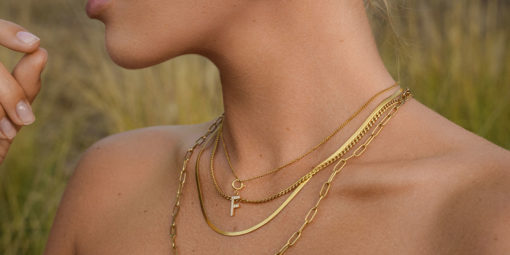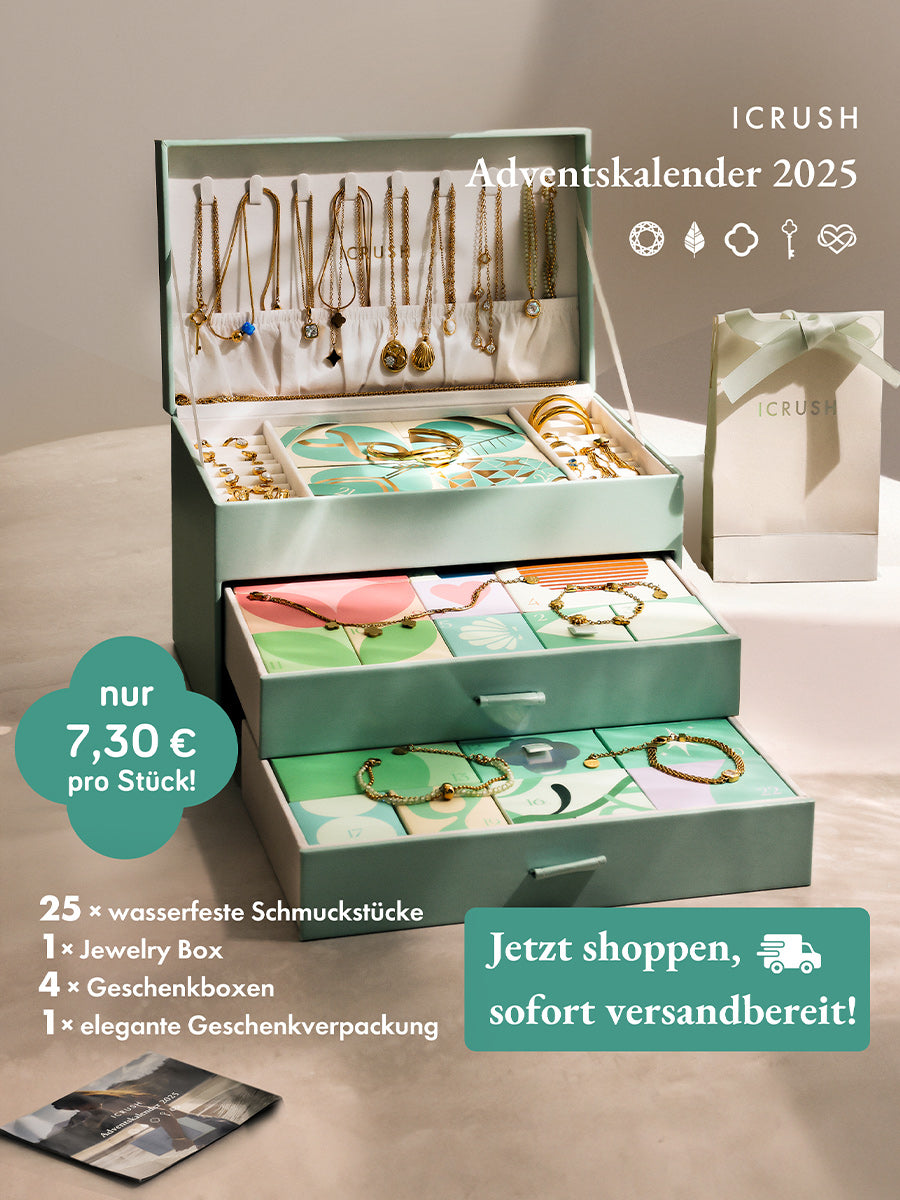
Chains Layering Guide
Chain Layering: How to combine chains of different lengths
It's become an indispensable part of the jewelry world: layering necklaces. Combining multiple necklaces, layered on top of each other, creates a stunning look and instantly enhances any outfit. Whether in gold or silver, a layered look with multiple necklaces is always an eye-catcher.
What does layering mean?
With chain layering, several chains are "layered," meaning they are worn on top of each other to create a great look. It is important that the chains have different lengths so that each chain can be seen individually. Unlike While the neckmesh trend , in which multiple necklaces are stacked in a random, messy manner, is more orderly, a layered look is more elegant. If you can't decide on a jewelry choice and want to wear several necklaces together, you can easily create a great layering look. This way, you can combine many of your favorite necklaces.
How chain layering works with ICRUSH
It looks simple, but combining multiple necklaces can be a challenge for some. There are just a few things to keep in mind to create the perfect layering look.
The most important rule for layering necklaces: the chains should be of different lengths or adjustable to different lengths. This way, each individual chain stands out and nothing is hidden. When layering, it's best to limit the number of chains to a maximum of five to avoid an overly cluttered jewelry combination.
A 30-40 cm long chain is suitable for the top layer. This can be worn as a choker or at collarbone length and forms the base for all the chains below. Chains without pendants, such as link chains, pearl necklaces, or necklaces with discs, are particularly suitable for this.
A chain measuring 45-55 cm in length fits well underneath. A pendant chain is a great option here, but another chain without a pendant is also a good option.
To complete the layered look, you can add another chain measuring 55-65 cm in length. Y-chains or long pendant chains are ideal for this. If that's not enough for you, you can continue layering until the chain layering is perfect.

The tips at a glance:
- Choose a maximum of five chains of different lengths.
- The top chain should be between 30-40 cm long.
- This is followed by a chain between 45-55 cm with or without a pendant.
- For the third chain you can choose a chain between 55-65 cm.
- Work your way down from the top chain and see how many chains you like in your layering look.
Frequently asked questions about layering:
Which chains are suitable for layering?
Finding suitable chains for layering is easy. Almost any chain can be used in a layered look. Chains without pendants or chains with many small pendants, such as discs or pearls, are particularly suitable as top chains. Link chains, whether chunky or fine, can also be combined.
Pendant chains are particularly suitable as a middle or bottom chain in layering. Combining multiple pendant chains is also possible; this layering is especially beautiful when the size of the pendant increases towards the bottom.
Y-chains add a special touch to layered jewelry. These can be worn as the bottom chain in a layered look and provide a great finishing touch.
How can I prevent chains from tangling when layering?
The finer the chains, the more easily they can tangle when layered. Therefore, it's recommended to choose chains of different textures when layering necklaces. A fine chain and a link chain are less likely to tangle, while several chunkier chains are almost impossible to tangle. However, those who prefer understated jewelry don't have to forgo fine chains. Arranging the chains around your neck at regular intervals prevents them from becoming knotted and tangled, ensuring the look sits perfectly.
There's another simple trick for tangling-free layering: the Layering Helper. This small tool, which can hold up to three necklaces, has a single clasp, preventing the necklaces from twisting, tangling, or knotting.
Another option: all the chains included in the layering look can be fastened together. The same eyelet can be used to fasten two or three chains together. This way, the chains hang securely together and won't tangle.
Can I combine gold and silver in a layering look?
Combining gold and silver is still very trendy. Layering a necklace in gold alone or in silver is very beautiful, but gold and silver can also be combined in a layered look. If you like the bicolor trend, you can mix and match colors in necklace layering as you please. A special trick: combining the same necklace twice—once in gold and once in silver—creates an especially cool look. This works particularly well with link chains and snake chains.
In our guide to Combining jewelry you will find more tips for the perfect jewelry combination – from chain layering to ring stacking!




Leave a comment
This site is protected by hCaptcha and the hCaptcha Privacy Policy and Terms of Service apply.